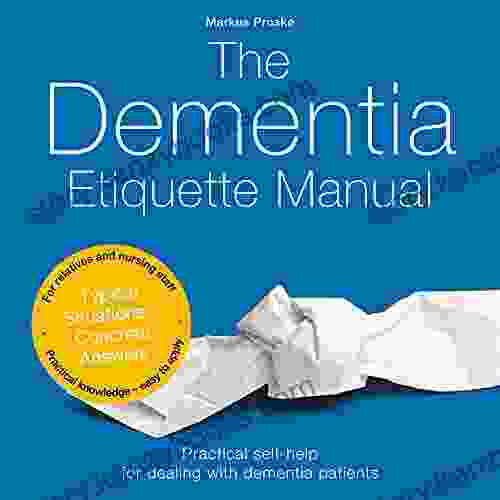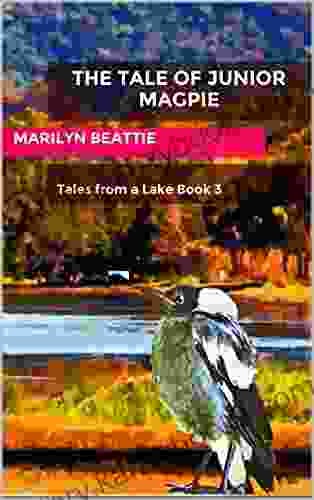PHP Object Oriented Programming With Oracle: The Ultimate Guide

Are you ready to take your PHP skills to the next level? If so, then you need to learn object oriented programming (OOP). OOP is a powerful programming paradigm that can help you write more efficient, maintainable, and reusable code. And when it comes to OOP, there's no better language to use than PHP.
4.8 out of 5
| Language | : | English |
| File size | : | 10696 KB |
| Screen Reader | : | Supported |
| Print length | : | 45 pages |
In this comprehensive guide, we'll teach you everything you need to know about PHP OOP. We'll start with the basics, such as classes, objects, and methods. Then, we'll move on to more advanced topics, such as inheritance, polymorphism, and encapsulation.
By the end of this guide, you'll be able to write PHP OOP code like a pro. You'll be able to create complex applications that are both efficient and easy to maintain. So what are you waiting for? Let's get started!
What is OOP?
OOP is a programming paradigm that emphasizes the use of objects and classes. Objects are data structures that contain data and methods. Classes are blueprints that define the structure and behavior of objects.
OOP has many advantages over other programming paradigms. OOP code is more efficient, maintainable, and reusable. OOP also makes it easier to create complex applications.
Why use PHP for OOP?
PHP is a great language for OOP. It has a rich set of features that make it easy to write OOP code. PHP also has a large community of developers who can help you learn OOP and solve problems.
Getting started with OOP in PHP
To get started with OOP in PHP, you need to create a class. A class is a blueprint that defines the structure and behavior of objects.
Here is an example of a simple PHP class:
php class Person { public $name; public $age;
public function __construct($name, $age){$this->name = $name; $this->age = $age; }
public function greet(){echo "Hello, my name is {$this->name}and I am {$this->age}years old."; }}
This class defines two properties, `name` and `age`. It also defines a constructor method, which is called when a new object is created. The constructor method initializes the `name` and `age` properties.
It also defines a method called `greet()`, which prints a greeting message.
To create an object, you use the `new` keyword. For example, the following code creates a new `Person` object:
php $person = new Person('John Doe', 30);
Once you have created an object, you can access its properties and methods using the dot operator. For example, the following code accesses the `name` property of the `$person` object:
php echo $person->name;
The following code calls the `greet()` method of the `$person` object:
php $person->greet();
Inheritance
Inheritance is a powerful feature of OOP that allows you to create new classes from existing classes. The new class, called the child class, inherits the properties and methods of the existing class, called the parent class.
Here is an example of how to create a child class in PHP:
php class Student extends Person { public $gpa;
public function __construct($name, $age, $gpa){parent::__construct($name, $age); $this->gpa = $gpa; }
public function getGpa(){return $this->gpa; }}
The `Student` class inherits the `name` and `age` properties from the `Person` class. It also defines a new property, `gpa`.
The `Student` class also defines a new constructor method, which initializes the `gpa` property.
It also defines a new method, `getGpa()`, which returns the `gpa` property.
To create a `Student` object, you use the `new` keyword. For example, the following code creates a new `Student` object:
php $student = new Student('John Doe', 30, 3.5);
Once you have created a `Student` object, you can access its properties and methods using the dot operator. For example, the following code accesses the `name` property of the `$student` object:
php echo $student->name;
The following code calls the `getGpa()` method of the `$student` object:
php echo $student->getGpa();
Polymorphism
Polymorphism is a powerful feature of OOP that allows you to write code that can work with different types of objects. Polymorphism is achieved through method overriding.
Method overriding allows you to define a method in a child class that has the same name and signature as a method in the parent class. When you call the method on a child class object, the child class method will be executed.
Here is an example of how to override a method in PHP:
php class Person { public function greet(){echo "Hello, my name is {$this->name}."; }}
class Student extends Person { public function greet(){parent::greet(); echo " I am a student."; }}
The `Student` class overrides the `greet()` method of the `Person` class. When you call the `greet()` method on a `Student` object, the `Student` class method will be executed.
Encapsulation
Encapsulation is a powerful feature of OOP that allows you to hide data and methods from other parts of your program. Encapsulation is achieved through access modifiers.
Access modifiers control who can access data and methods. There are three access modifiers in PHP: public, protected, and private.
- Public properties and methods can be accessed by anyone.
- Protected properties and methods can be accessed by the class itself and its subclasses.
- Private properties and methods can only be accessed by the class itself.
Here is an example of how to use access modifiers in PHP:
php class Person { private $name; protected $age; public $gender;
public function __construct($name, $age, $gender){$this->name = $name; $this->age = $age; $this->gender = $gender; }
public function getName(){return $this->name; }
protected function getAge(){return $this->age; }
private function getGender(){return $this->gender; }}
The `name` property is public, which means that it can be accessed by anyone. The `age` property is protected, which means that it can be accessed by the `Person` class itself and its subclasses. The `gender` property is private, which means that it can only be accessed by the `Person` class itself.
OOP is a powerful programming paradigm that can help you write more efficient, maintainable, and reusable code. PHP is a great language for OOP, and this guide has taught you everything you need to know to get started with OOP in PHP.
So what are you waiting for? Start writing OOP code today!
4.8 out of 5
| Language | : | English |
| File size | : | 10696 KB |
| Screen Reader | : | Supported |
| Print length | : | 45 pages |
Do you want to contribute by writing guest posts on this blog?
Please contact us and send us a resume of previous articles that you have written.
 Book
Book Novel
Novel Page
Page Chapter
Chapter Text
Text Story
Story Genre
Genre Reader
Reader Library
Library Paperback
Paperback E-book
E-book Magazine
Magazine Newspaper
Newspaper Paragraph
Paragraph Sentence
Sentence Bookmark
Bookmark Shelf
Shelf Glossary
Glossary Bibliography
Bibliography Foreword
Foreword Preface
Preface Synopsis
Synopsis Annotation
Annotation Footnote
Footnote Manuscript
Manuscript Scroll
Scroll Codex
Codex Tome
Tome Bestseller
Bestseller Classics
Classics Library card
Library card Narrative
Narrative Biography
Biography Autobiography
Autobiography Memoir
Memoir Reference
Reference Encyclopedia
Encyclopedia Mantak Chia
Mantak Chia Todd Crandell
Todd Crandell Robert Lafore
Robert Lafore Margaret S Graves
Margaret S Graves Marie Atkinson
Marie Atkinson Margaret E Wagner
Margaret E Wagner Zach Codings
Zach Codings Maria Brull
Maria Brull Mandy Carter
Mandy Carter Mark Kleanthous
Mark Kleanthous Marc Mullinax
Marc Mullinax Robert Martin
Robert Martin Lj Andrews
Lj Andrews Steve Watkins
Steve Watkins Taylor Lee
Taylor Lee Nahimahmad Horatti
Nahimahmad Horatti Thomas Nelson
Thomas Nelson Lyra Adams
Lyra Adams Penelope J Stokes
Penelope J Stokes Marie Austin
Marie Austin
Light bulbAdvertise smarter! Our strategic ad space ensures maximum exposure. Reserve your spot today!

 Kevin TurnerHoliday Recipes: A Culinary Journey Through Christmas, Thanksgiving, and More
Kevin TurnerHoliday Recipes: A Culinary Journey Through Christmas, Thanksgiving, and More
 Tennessee WilliamsUnlock the Delectable World of Charcuterie with "Charcuterie For Dummies" by...
Tennessee WilliamsUnlock the Delectable World of Charcuterie with "Charcuterie For Dummies" by... Eugene PowellFollow ·6.6k
Eugene PowellFollow ·6.6k Brandon CoxFollow ·5.2k
Brandon CoxFollow ·5.2k Charles ReedFollow ·5.8k
Charles ReedFollow ·5.8k Easton PowellFollow ·7.4k
Easton PowellFollow ·7.4k Mikhail BulgakovFollow ·12k
Mikhail BulgakovFollow ·12k Winston HayesFollow ·18.8k
Winston HayesFollow ·18.8k Brenton CoxFollow ·3.1k
Brenton CoxFollow ·3.1k Ryan FosterFollow ·9.2k
Ryan FosterFollow ·9.2k

 Austin Ford
Austin FordJames Madison: His Notes on the Constitutional Debates of...
James Madison's...

 Robin Powell
Robin PowellThe Dementia Etiquette Manual: A Comprehensive Guide to...
If you're like most...

 Wade Cox
Wade CoxEmbark on an Unforgettable Journey through the Ironroot...
Step into the captivating realm of Ironroot...

 Ralph Waldo Emerson
Ralph Waldo Emerson300 Everyday Recipes: The Ultimate Cookbook for Beginners...
Are you ready to...

 Dakota Powell
Dakota PowellJade Empire: Tales of the Empire: Unravel the Enthralling...
Prepare to embark on an extraordinary...

 Harold Blair
Harold BlairElevate Your Comfort Food: The Essential Easy Mashed...
Unveiling the...
4.8 out of 5
| Language | : | English |
| File size | : | 10696 KB |
| Screen Reader | : | Supported |
| Print length | : | 45 pages |








